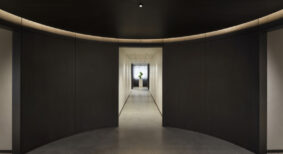For many homeowners, when planning an addition, a bulldozer and a fresh start can seem like the only options to solve space issues. It can be difficult to see beyond the blinders created from living in a house, in a certain way, for many years.
But building brand new may not always be the right choice. Every year, demolition results in a massive amount of waste added to landfills, high energy consumption, as well as the release of hazardous and harmful materials. The extraction, manufacture, and transportation of new materials required for construction also have detrimental impacts on the environment. The principle of ‘reduce, reuse, and recycle’ should apply to housing, by building less area, and reusing or re-purposing some of what you’ve got.
Wish-list creatively
The wish-list must be identified in terms of uses instead of rooms. Not every activity requires a dedicated room, and listing them as such only results in over-built and under-used spaces. Functional planning incorporates flexibility through uses that can be combined at the same time, staged at different times of the day, or even through different furniture or millwork configurations. Through an in-depth investigation of how the homeowner wants to live now and in the future, innovative synergies can be discovered. When space is used efficiently and thoughtfully, it can bring a household closer together, both physically and through the activities that transpire within.
Sometimes the craziest idea is the best idea. Breaking free from standard layouts and existing configurations creates a blank slate which can reveal the full possibility within an existing house. In the Gathering House, a large renovation in Fort Langley, B.C., the homeowners wanted several large additions to create a kitchen and living space suitable for hosting their large family. Instead, the best solution was to remove several of the walls within the existing and choppy layout, thus combining multiple under-utilized rooms into one huge gathering space.
Work with what exists
When trying to preserve the shell of a home, a re-conception of existing forms results in the most successful transformations. A mid-century bungalow can easily be modernized through new siding or colours. A late century home with heritage details can be more of a challenge. Trying to force it to be something it is not, for example a contemporary cubist home, can fall short or be prohibitively expensive. For example, the Gathering House was originally built in the 90s and had the rooflines and a few of the details one would expect with a craftsman home, but lacked character. By repainting with a mono-chromatic cool grey palette and adding warm hints of wood accents in soffits, modern outdoor screen elements, and localized bands of new siding, the home was transformed with a modern Scandinavian inspired simplicity.
Have fun with some dramatic changes
Renovating can provide room in the budget for a few breathtaking alterations that would not otherwise be possible. Designing these ‘big bang’ spaces provides an opportunity to let one’s hair down and think outside the box. A thoughtful choice of locations will allow the theatricality to be enjoyed frequently and to enhance a meaningful aspect of the homeowner’s daily life.
A straightforward conversation about what makes the owners happy can provide the clues as to where to invest the square footage and beauty. For the Gathering House, it was the simple act of making coffee or tea in the morning and having a glass of wine in the evening. This was celebrated with a beverage area which flowed from and extended the kitchen aesthetic, while providing a dedicated space for a cappuccino machine, wine fridge, dishwasher, prep sink, hot water tap for tea, and convenient storage for cups, glasses, and related accessories. The space is framed by a floor to ceiling glass wall and door which open on to an outdoor covered living space with lounge furniture and a fireplace.
As each house and site is unique, an investigation of random spaces or missed opportunities can provide inspiration. A random detail of the existing home, a single area of vaulted ceiling at a dormer for example, can be given weight by carrying it elsewhere and vaulting adjacent ceilings, or can be accented by exposing structural beams or providing dramatic up-lighting. A neglected side garden can be tied into the home with a carefully placed window to capture a view.
When renovating a home, every space and every use provide the opportunity to create better functionality, more flexibility, and visually captivating spaces.
Allison Holden-Pope, Architect AIBC, is founder and principal of One SEED Architecture + Interiors, an award-winning boutique architecture firm based in Vancouver, B.C., specializing in modern and sustainable design. She is a LEED Accredited Professional (BD+C), as well as a CanPHI Trained Passive House Design Professional.







